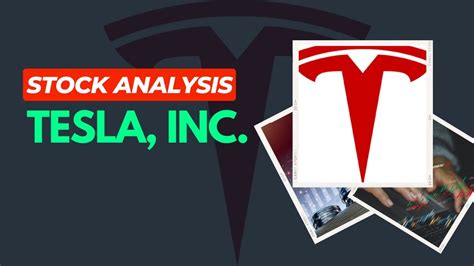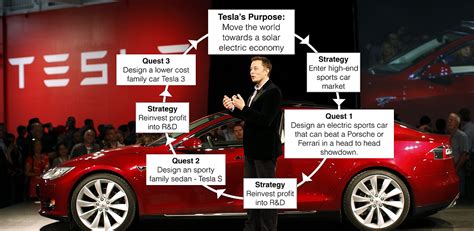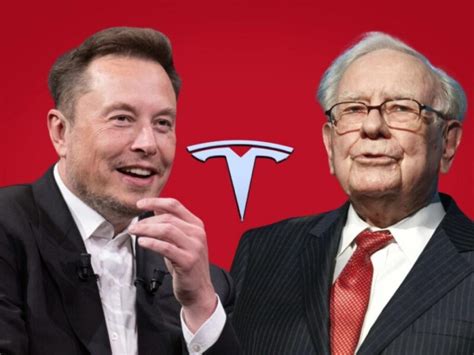
Elon Musk, the CEO of Tesla, primarily earns his compensation through stock options rather than a traditional salary. While Tesla employees receive competitive salaries, benefits, and opportunities for equity, Musk’s compensation structure is heavily weighted towards performance-based stock awards, aligning his interests directly with the company’s long-term success. This unconventional approach has been a hallmark of his leadership and a key driver of Tesla’s growth.
Tesla’s compensation philosophy for its employees focuses on attracting and retaining top talent through competitive salaries, comprehensive benefits, and equity grants. The company aims to reward employees for their contributions to Tesla’s mission of accelerating the world’s transition to sustainable energy. While specific salary figures vary depending on the role, experience, and location, Tesla positions itself as a leader in compensation within the automotive and technology industries.
Elon Musk’s Unique Compensation Package
Unlike most CEOs who receive a base salary and annual bonuses, Elon Musk’s compensation is primarily tied to Tesla’s market capitalization and operational milestones. In 2018, shareholders approved a groundbreaking performance-based compensation plan that awarded Musk stock options contingent on Tesla achieving specific targets related to revenue, profitability, and market cap. This plan, considered one of the largest executive compensation packages in history, does not provide Musk with any guaranteed salary or cash bonus.
The 2018 compensation plan outlined twelve tranches of stock options, each vesting as Tesla’s market capitalization increased by $50 billion and specific operational milestones were met. Each tranche granted Musk the option to purchase Tesla shares at a fixed price, allowing him to profit significantly as the company’s value soared. To date, Musk has vested in multiple tranches of these options as Tesla has surpassed numerous milestones.
“It’s important to note that Elon Musk’s compensation is almost entirely performance-based,” explains a Tesla spokesperson. “This structure aligns his interests directly with the long-term success of the company and its shareholders. He only benefits if Tesla achieves ambitious goals.”
This unique compensation structure has been praised by some as a brilliant way to incentivize Musk to focus on long-term value creation. However, it has also faced criticism from those who argue that it is excessively generous and could lead to short-term decision-making to meet the required milestones. Nevertheless, the plan has been instrumental in motivating Musk to drive Tesla to unprecedented levels of growth and innovation.
Tesla Employee Compensation: Salaries, Benefits, and Equity
While Musk’s compensation is exceptional, Tesla also emphasizes fair and competitive compensation for its employees. The company offers a range of benefits, including health insurance, paid time off, retirement plans, and employee stock purchase programs. Salaries are determined based on factors such as experience, skills, performance, and location.
According to data from Glassdoor and other compensation websites, the average salary for a Tesla engineer ranges from $120,000 to $200,000 per year, depending on the specific role and level of experience. Manufacturing workers typically earn between $40,000 and $80,000 per year, while sales and customer service representatives can expect to earn between $50,000 and $100,000 per year. These figures are generally competitive within the industries in which Tesla operates.
In addition to salaries, Tesla also offers equity grants to many of its employees, particularly those in management and engineering roles. These stock options or restricted stock units (RSUs) provide employees with the opportunity to share in the company’s success. The value of these equity grants can vary significantly depending on Tesla’s stock price performance.
“Tesla is committed to providing its employees with a comprehensive compensation package that includes competitive salaries, excellent benefits, and opportunities for equity ownership,” says a Tesla HR manager. “We believe that our employees are our most valuable asset, and we are dedicated to attracting and retaining top talent.”
Tesla also provides employees with various perks and amenities, such as on-site gyms, cafeterias, and electric vehicle charging stations. The company fosters a culture of innovation and collaboration, providing employees with opportunities to work on cutting-edge technologies and make a meaningful impact on the world.
Comparison with Other Tech and Automotive Companies
When comparing Tesla’s compensation practices to those of other tech and automotive companies, it is evident that Tesla positions itself as a leader in certain areas. In terms of salaries, Tesla’s engineers and other technical professionals generally earn comparable salaries to their counterparts at companies like Google, Apple, and Amazon. However, Tesla’s compensation packages often include a higher proportion of equity, reflecting the company’s focus on long-term growth and employee ownership.
In the automotive industry, Tesla’s salaries are typically higher than those offered by traditional automakers such as Ford and General Motors. This is due in part to Tesla’s focus on technology and innovation, which requires a different skill set and attracts a different type of employee. Tesla also benefits from its reputation as a high-growth company, which allows it to attract top talent willing to accept a higher level of risk in exchange for the potential for significant financial rewards.
However, it is important to note that Tesla’s compensation practices have not always been without controversy. In the past, the company has faced criticism for its demanding work environment and long hours. Some employees have also complained about the lack of work-life balance and the pressure to meet ambitious deadlines. Despite these challenges, Tesla remains a highly sought-after employer, particularly among those who are passionate about electric vehicles and sustainable energy.
Impact of Tesla’s Compensation Strategy on Employee Morale and Performance
Tesla’s compensation strategy has a significant impact on employee morale and performance. The company’s emphasis on equity ownership creates a sense of alignment between employees and shareholders, encouraging them to work harder and smarter to drive the company’s success. The potential for significant financial rewards through stock options and RSUs can be a powerful motivator, particularly for employees who are willing to take on a higher level of risk.
However, the demanding work environment and long hours at Tesla can also take a toll on employee morale. The pressure to meet ambitious deadlines and the constant need to innovate can lead to burnout and stress. It is important for Tesla to strike a balance between incentivizing performance and supporting employee well-being.
To address these challenges, Tesla has implemented various initiatives to improve employee morale and work-life balance. The company has invested in employee training and development programs, providing employees with opportunities to learn new skills and advance their careers. Tesla has also implemented flexible work arrangements, allowing employees to work remotely or adjust their schedules to better meet their personal needs.
Future of Tesla’s Compensation Strategy
As Tesla continues to grow and evolve, its compensation strategy is likely to adapt as well. The company may need to adjust its salary levels and benefits packages to remain competitive in the face of increasing competition for talent. Tesla may also need to refine its equity compensation programs to ensure that they continue to incentivize performance and align employee interests with those of shareholders.
One potential area of focus for Tesla is to increase the transparency and predictability of its compensation programs. Many employees find it difficult to understand how their salaries and equity grants are determined. Providing employees with more information about the factors that influence their compensation can help to build trust and improve morale.
Tesla may also need to consider expanding its employee ownership programs to include a broader range of employees. Currently, equity grants are primarily offered to management and engineering roles. Extending these programs to manufacturing workers and other non-technical employees could help to create a stronger sense of shared ownership and commitment to the company’s mission.
In conclusion, Tesla’s compensation strategy is a key factor in its success. The company’s emphasis on performance-based compensation, equity ownership, and competitive benefits has helped it to attract and retain top talent and drive innovation. While there are challenges associated with the demanding work environment and long hours at Tesla, the company remains a highly sought-after employer, particularly among those who are passionate about electric vehicles and sustainable energy. As Tesla continues to grow and evolve, its compensation strategy is likely to adapt as well to meet the changing needs of the company and its employees.
Elon Musk’s Continued Focus on Long-Term Value Creation
Elon Musk’s compensation structure, devoid of a conventional salary and heavily reliant on stock options tied to Tesla’s performance, reinforces his commitment to long-term value creation. This model ensures that Musk’s financial interests are intrinsically linked to the company’s success, motivating him to prioritize sustainable growth and innovation. His substantial stake in Tesla, accumulated through these stock options, further solidifies his dedication to the company’s mission of accelerating the world’s transition to sustainable energy.
While this compensation approach has faced scrutiny, particularly regarding its size and potential for short-term decision-making, it has undeniably played a crucial role in driving Tesla’s remarkable growth and technological advancements. The sheer scale of the potential rewards incentivizes Musk to push the boundaries of what’s possible, fostering a culture of innovation and risk-taking within the company.
The Role of Stock Options in Attracting and Retaining Talent
Beyond Musk’s unique compensation package, Tesla’s use of stock options and restricted stock units (RSUs) for its employees is a vital component of its talent acquisition and retention strategy. By offering employees the opportunity to become shareholders, Tesla fosters a sense of ownership and shared success. This incentivizes employees to contribute to the company’s long-term growth and aligns their interests with those of the shareholders.
The potential for significant financial gains through stock options and RSUs can be a powerful motivator, especially for employees who are willing to take on the challenges and demanding work environment that Tesla is known for. This approach allows Tesla to attract top talent from both the technology and automotive industries, creating a diverse and highly skilled workforce.
However, the value of these equity-based incentives is directly tied to Tesla’s stock price performance. This can create uncertainty and volatility for employees, particularly during periods of market downturn or company-specific challenges. Therefore, Tesla needs to balance the potential rewards of equity compensation with other forms of compensation and benefits to ensure employee satisfaction and retention.
Addressing Concerns about Work-Life Balance and Employee Well-being
While Tesla’s compensation strategy is designed to attract and motivate employees, the company has faced criticism regarding its demanding work environment and potential impact on employee well-being. Reports of long hours, intense pressure, and limited work-life balance have raised concerns about the sustainability of Tesla’s high-performance culture.
Addressing these concerns is crucial for Tesla to maintain its reputation as a desirable employer and to ensure the long-term health and productivity of its workforce. The company needs to invest in initiatives that promote employee well-being, such as flexible work arrangements, mental health support, and opportunities for professional development.
Furthermore, Tesla needs to foster a culture of open communication and feedback, where employees feel comfortable raising concerns and suggesting improvements to the work environment. This will help to identify and address potential issues before they escalate and negatively impact employee morale and productivity.
Tesla’s Commitment to Fair and Competitive Compensation
Despite the challenges and criticisms, Tesla remains committed to providing fair and competitive compensation to its employees. The company regularly reviews its salary levels and benefits packages to ensure that they are in line with industry standards and reflect the value that employees bring to the organization.
Tesla also invests in training and development programs to help employees enhance their skills and advance their careers. This not only benefits the employees themselves but also contributes to the overall success of the company by creating a more skilled and adaptable workforce.
By focusing on both financial compensation and non-financial benefits, such as opportunities for growth and development, Tesla aims to create a work environment that is both rewarding and sustainable. This will help the company to attract and retain top talent and to achieve its ambitious goals in the years to come.
The Future of Executive Compensation: Lessons from Tesla
Tesla’s unique approach to executive compensation, particularly Elon Musk’s performance-based stock option plan, offers valuable lessons for other companies and boards of directors. The success of this model demonstrates the potential of aligning executive compensation with long-term value creation and shareholder interests.
However, it also highlights the importance of careful planning and oversight to ensure that the compensation plan is fair, transparent, and sustainable. The size and complexity of Musk’s compensation package have raised concerns about potential conflicts of interest and the need for robust governance mechanisms.
As companies grapple with the challenges of attracting and retaining top talent in an increasingly competitive market, they may look to Tesla’s example for inspiration. However, it is crucial to adapt these lessons to the specific context of each company and to carefully consider the potential risks and rewards of different compensation models.
The Importance of Transparency and Communication
One of the key takeaways from Tesla’s compensation story is the importance of transparency and communication. Employees, shareholders, and the public all have a legitimate interest in understanding how executives and employees are compensated.
Companies that are transparent about their compensation practices are more likely to build trust and credibility with their stakeholders. This can lead to improved employee morale, increased shareholder confidence, and a stronger reputation in the marketplace.
Tesla has made efforts to improve its transparency in recent years, but there is still room for improvement. By providing more detailed information about its compensation policies and practices, Tesla can further enhance its reputation as a responsible and accountable employer.
The Ongoing Debate about Executive Compensation
The debate about executive compensation is likely to continue for the foreseeable future. There is no one-size-fits-all solution, and companies must carefully consider their own unique circumstances when designing their compensation plans.
However, by focusing on long-term value creation, aligning executive interests with shareholder interests, and promoting transparency and communication, companies can create compensation systems that are both fair and effective.
Tesla’s experience provides valuable insights into the challenges and opportunities of executive compensation in the 21st century. By learning from Tesla’s successes and failures, other companies can improve their own compensation practices and create a more sustainable and equitable business environment.
The details of Tesla’s employee compensation, including specific salary ranges and equity grants, are subject to change based on market conditions, company performance, and individual employee performance. It is important to consult official Tesla sources and compensation websites for the most up-to-date information. FAQ: Tesla’s Compensation Structure
1. How does Elon Musk get paid at Tesla?
Elon Musk does not receive a salary or cash bonus. His compensation is primarily based on stock options awarded to him based on Tesla achieving specific market capitalization and operational milestones. The 2018 performance award grants him options to purchase Tesla shares at a fixed price, with each tranche vesting as the company’s market cap increases by $50 billion and operational targets are met.
2. What benefits do Tesla employees receive?
Tesla employees receive a competitive benefits package, including health insurance (medical, dental, and vision), paid time off (vacation, sick leave, and holidays), retirement plans (401(k) with company match), employee stock purchase programs, and various perks such as on-site gyms, cafeterias, and electric vehicle charging stations.
3. Are Tesla salaries competitive compared to other tech and auto companies?
Generally, yes. Tesla aims to offer competitive salaries, particularly for engineers and other technical professionals, comparable to those at companies like Google, Apple, and Amazon. In the automotive industry, Tesla’s salaries are typically higher than those offered by traditional automakers like Ford and General Motors.
4. How do stock options work for Tesla employees?
Tesla offers stock options and restricted stock units (RSUs) to many employees, particularly those in management and engineering roles. These grants allow employees to purchase Tesla shares at a predetermined price or receive shares after a vesting period, providing an opportunity to share in the company’s financial success. The value of these options or RSUs is tied to Tesla’s stock price performance.
5. What is Tesla doing to improve work-life balance for its employees?
Tesla has implemented various initiatives to improve employee morale and work-life balance, including investments in employee training and development programs, flexible work arrangements (where possible), and efforts to foster a more supportive and collaborative work environment. They also focus on promoting internal growth and advancement opportunities.
Elon Musk’s Unconventional Compensation: A Deep Dive into Risk and Reward
Elon Musk’s compensation structure at Tesla is a radical departure from the traditional executive pay model, where CEOs typically receive a base salary, annual bonuses, and perhaps some stock options. Musk, on the other hand, receives no salary or cash bonus. His entire compensation is contingent on Tesla achieving ambitious market capitalization and operational milestones, as outlined in the 2018 performance award.
This approach is designed to align Musk’s interests directly with those of Tesla’s shareholders, incentivizing him to focus on long-term value creation. By tying his compensation to the company’s success, the board of directors aimed to motivate Musk to drive Tesla to new heights and to ensure that he remains fully committed to the company’s mission.
The 2018 compensation plan provided Musk with 12 tranches of stock options, each vesting as Tesla’s market capitalization increased by $50 billion and specific operational milestones were met. These milestones included targets for revenue, gross margin, and vehicle production. Each tranche granted Musk the option to purchase Tesla shares at a fixed price, allowing him to profit significantly as the company’s value soared.
This structure has been praised by some as a brilliant way to incentivize Musk to focus on long-term value creation. By placing such a high degree of risk on Musk’s shoulders, the board of directors effectively challenged him to deliver exceptional results. The potential rewards were enormous, but so were the risks. If Tesla failed to meet its ambitious targets, Musk would receive nothing.
However, the plan has also faced criticism from those who argue that it is excessively generous and could lead to short-term decision-making to meet the required milestones. Some critics have also questioned whether the plan adequately protects the interests of minority shareholders.
Despite these criticisms, the 2018 compensation plan has been instrumental in motivating Musk to drive Tesla to unprecedented levels of growth and innovation. Under his leadership, Tesla has become the world’s leading electric vehicle manufacturer, a pioneer in battery technology, and a major player in the renewable energy market.
Tesla’s Employee Compensation: A Holistic Approach
While Musk’s compensation is exceptional, Tesla also emphasizes fair and competitive compensation for its employees. The company offers a range of benefits, including health insurance, paid time off, retirement plans, and employee stock purchase programs. Salaries are determined based on factors such as experience, skills, performance, and location.
Tesla aims to attract and retain top talent by offering competitive salaries and benefits packages. The company recognizes that its employees are its most valuable asset and that their contributions are essential to its success. Therefore, Tesla is committed to providing its employees with a rewarding and fulfilling work experience.
In addition to salaries and benefits, Tesla also offers equity grants to many of its employees, particularly those in management and engineering roles. These stock options or restricted stock units (RSUs) provide employees with the opportunity to share in the company’s success. The value of these equity grants can vary significantly depending on Tesla’s stock price performance.
Tesla’s employee stock purchase program allows employees to purchase Tesla shares at a discounted price. This program encourages employees to become shareholders in the company and to align their interests with those of the shareholders.
Tesla also provides employees with various perks and amenities, such as on-site gyms, cafeterias, and electric vehicle charging stations. The company fosters a culture of innovation and collaboration, providing employees with opportunities to work on cutting-edge technologies and make a meaningful impact on the world.
The Importance of Company Culture
In addition to compensation and benefits, company culture plays a crucial role in attracting and retaining talent. Tesla has a reputation for being a demanding but rewarding place to work. The company fosters a culture of innovation, collaboration, and continuous improvement.
Tesla employees are passionate about the company’s mission and are committed to accelerating the world’s transition to sustainable energy. They are driven by a desire to make a difference and to contribute to a better future.
Tesla’s culture is not for everyone. The company demands a high level of performance and expects its employees to work hard and to be constantly learning and growing. However, for those who thrive in this environment, Tesla offers unparalleled opportunities for career advancement and personal fulfillment.
The Challenges of a High-Growth Company
Tesla is a high-growth company, which means that it is constantly evolving and changing. This can create challenges for employees, who must be adaptable and resilient in the face of change.
Tesla’s rapid growth has also put a strain on its resources, leading to long hours and demanding workloads for some employees. The company is working to address these challenges by investing in new technologies and processes to improve efficiency and productivity.
Despite these challenges, Tesla remains a highly sought-after employer, particularly among those who are passionate about electric vehicles and sustainable energy. The company offers a unique opportunity to work on cutting-edge technologies and to make a meaningful impact on the world.
The Future of Tesla’s Compensation Strategy
As Tesla continues to grow and evolve, its compensation strategy is likely to adapt as well. The company may need to adjust its salary levels and benefits packages to remain competitive in the face of increasing competition for talent. Tesla may also need to refine its equity compensation programs to ensure that they continue to incentivize performance and align employee interests with those of shareholders.
One potential area of focus for Tesla is to increase the transparency and predictability of its compensation programs. Many employees find it difficult to understand how their salaries and equity grants are determined. Providing employees with more information about the factors that influence their compensation can help to build trust and improve morale.
Tesla may also need to consider expanding its employee ownership programs to include a broader range of employees. Currently, equity grants are primarily offered to management and engineering roles. Extending these programs to manufacturing workers and other non-technical employees could help to create a stronger sense of shared ownership and commitment to the company’s mission.
In conclusion, Tesla’s compensation strategy is a key factor in its success. The company’s emphasis on performance-based compensation, equity ownership, and competitive benefits has helped it to attract and retain top talent and drive innovation. While there are challenges associated with the demanding work environment and long hours at Tesla, the company remains a highly sought-after employer, particularly among those who are passionate about electric vehicles and sustainable energy. As Tesla continues to grow and evolve, its compensation strategy is likely to adapt as well to meet the changing needs of the company and its employees.









